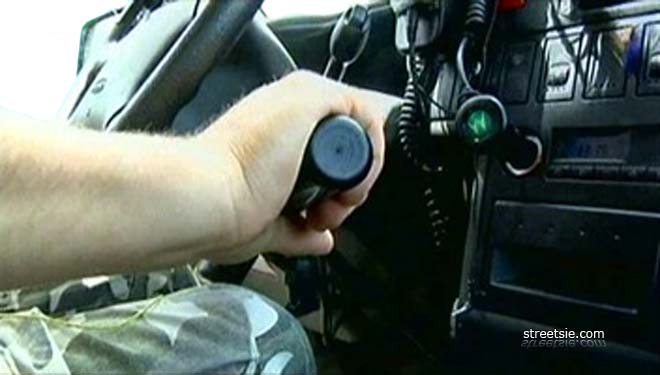Incomplete vs Complete Spinal Cord Injury
A key component of initial hospital examinations and treatment is the diagnosis of a spinal cord injury as incomplete or complete. Incomplete means some, sensory (feeling) or motor (muscle) function exists below the neurological level of injury, including the lowest sacral segment (S4-S5). Complete means none, sensory or motor function exists below the neurological level of injury, including the lowest sacral segment (S4-S5).
- Incomplete means some
- Complete means none
Diagnosis of a spinal cord injury as incomplete verses complete is made by locating the neurological level of injury and determining which myotomes and dermatomes remain intact. We covered this in the previous article and move on here to explore some real life examples and the long term outcomes of incomplete verses complete spinal cord injury.
It may not seem a big difference but the outcomes certainly are. To understand the broader implications of incomplete verses complete spinal cord injury we first need to consider the following real life examples. Incomplete and complete translate into being able to achieve a sustainable erection or not, having sensation in forearms or not, having wrist extension or not, to name but three examples.
While at first, the difference between some and none may seem subtle, after further consideration the full impact upon relationships, employment, health and independence become more obvious.
Real Life Examples of Incomplete vs Complete
Taking our first real life example, the inability to achieve a sustainable erection and satisfy your partner sexually is self demoralizing and can place a huge strain on an existing relationship or marriage. Impotency drastically reduces the number of potential partners interested in forming new sexual and intimate life-long relationships and greatly suppresses ones sexual self awareness, sexual development and sexual expression. Testosterone levels, impotency and virility have long been proven to have widespread influence upon the male psyche.

Hence, the inability to achieve a sustainable erection following spinal cord injury vastly reduces the opportunities available to men in finding a life partner, getting married, and fathering children. These undeniably huge life events are keenly sought by most men, and as such, they are possibly the greatest example of difference between an incomplete and complete spinal cord injury.
As a C4 incomplete quadriplegic I have no sensation from the nipples down or elbows out, though I feel compelled to state, I can achieve sustainable erections. I can only imagine the dent, the blow to ego and self becoming impotent a man. That said, there are many ways to sexually please a person and we advocate these throughout our website.
In our second real life example, having no forearm sensation makes it virtually impossible to determine by leaning on an object if it’s hot or cold, acidic, dirty, sharp, sticky, wet etc. Often clothing that cuts off circulation to hands goes unnoticed. Void of forearm sensation it’s impossible to estimate the weight of an object by holding it. Likewise, it’s impossible to sense when a limb is under so much pressure it’s about to break. Absolutely any area of skin or body part void of sensation is vulnerable to many forms of harm.

As an incomplete quadriplegic I have limited forearm sensation, areas of my body void of sensation seem to have a way of eventually getting the message through. Technically I am paralyzed and void of sensation from the chest down but as I’m incomplete my legs and feet spasm frequently. I experience warm or buzzing sensations in my lower limbs in response to pain. Typically those with complete spinal cord injury do not spasm or “feel” any sensation whatsoever below the neurological level of injury.
While eating dinner one night a complete quadriplegic friend of mine realized his roast pumpkin was missing, totally unaware it had fallen onto his bare foot causing third degree burns. Had that been my foot, I most likely would have noticed a dull sensation after five minutes and/or noticed increased spasm in that leg. Being incomplete is not always good however. I once calculated my feet spasm approx 8640 times per day.
Our third real life example of wrist extension means moving the back of the hand toward the back of the forearm (upward). Wrist flexion is moving the palm of the hand toward the front of the forearm (downward). When no wrist function exists and a diagnosis of incomplete is given there is small chance of regaining some wrist extension. Usually this would occur within 3 to 12 months of injury. When no wrist function exists and a diagnosis of complete is given, change is extremely rare.

In many countries to legally operate a vehicle on a public road requires wrist extension. When “some” wrist extension exists, bending the wrist upward automatically closes the hand and fingers, fashioning a grip sufficient enough to operate the standard hands controls of a disability friendly vehicle. The ability to drive (or not) has universal impact on employment opportunities, independence, freedom of travel, maintaining friendships, living in rural and remote areas, participation in the community, outings and social integration in general.
I have no wrist extension and cannot legally drive a car (not because my injury is incomplete). My spinal cord was damaged above the neurological section responsible for wrist extensors – C6. Having held A and C class, omnibus, motorcycle, forklift, cherry picker, scissor lift, and speedboat licenses, being active and adventurous driving is something I miss terribly.
“Losing my legs was hard to deal with but losing my hands is a real bitch.” –Graham Streets
Outomes of Incomplete vs Complete Spinal Cord Injury

Professor Wise Young, Ph.D., M.D. who co-chaired the committee defining the currently accepted ASIA (American Spinal Injury Association) classification suggests many doctors today frequently become confused when determining spinal cord injury levels, the definition of complete and incomplete, and the classification of spinal cord injury.
“In the end, the whole issue of complete versus incomplete injury may be a moot issue. The absence of motor and sensory function below the injury site does not necessarily mean that there are no axons that cross the injury site. Many clinicians equate a complete spinal cord injury with the lack of axons crossing the injury site. However, much animal and clinical data suggest that an animal or person with no function below the injury site can recover some function when the spinal cord is reperfused (in the case of an arteriovenous malformation causing ischemia to the cord), decompressed (in the case of a spinal cord that is chronically compressed), or treated with a drug such as 4-aminopyridine. The labeling of a person as being complete or incomplete, in my opinion, should not be used to deny a person hope or therapy.” —Professor Wise Young, Ph.D., M.D.
I agree, my GP admitted he knew about spinal cord injury in general but would assist in finding a local spinal injuries specialist with concise knowledge and experience if I wish. I see specialists annually so kept my GP who has been brilliant in learning with me the intricacies of quadriplegia and spinal cord injury.
Incomplete or complete many of the challenges in life after spinal cord injury are being met through advances in medicine, assistive devices and education. Research and studies highlight the need of improved therapies and treatments for spinal cord injury. Technology such as computers and disability schemes are broadening employment opportunities after spinal cord injury. Laws for wheelchair friendly buildings and environments are increasingly becoming legislated. And greater sexual awareness and rights for wheelchair users are being established globally.
Conclusion
Spinal cord injury is a life changing event. Stem cell research and advances in medicine are narrowing the differences between incomplete verses complete spinal cord injury. Still, the differences are significant and should be considered on an individual and whole basis. A diagnosis of complete is not absolute, some will regain function. A complete spinal cord injury does not mean an incomplete life. Emphasis is best placed on life after diagnosis rather than the diagnosis itself.
People with complete spinal cord injury may not be able to achieve a sustainable erection but many enjoy healthy active sexual relationships. Many are getting married and fathering children. Many are furthering their education and gaining meaningful employment. Incomplete verses complete spinal cord injury does not affect a person’s ability to love, respect, achieve and live a full satisfying life.
Resources
SCI Info Pages; http://www.sci-info-pages.com/levels.html
It is funny, we have researched and asked many drs, some of wich where specialist in this field. yet you seem to have compiled more answers and information that is easily understood on this one site. where and how did you find all of this information? I know some is threw living it but my husband has 10 almost 11yrs living it too and did not know most of this. I do not think we even knew that he has leg spasims becuase of a differance in him being incompleate vs compleate. so if he was compleate he would not have them?? also exsplains why sometimes he gets a “pressure” feeling or some odd sensation when somthing is pushing or touching him for a extended period of time. Like he was in the car the other day and a cold drink was leaning on him below where he could feel. he said all the sudden it like dawned on him he kinda.. felt somthing was there…. never understood these events
Carolin, thank-you for your high praise. I’ve always been inquisitive and love to learn. I’ve studied in a broad range of subjects and been very fortunate in teaming with professionals; Doctors, Physio’s, OT’s, Counsellors and other academics as well as surround myself with many wheelchair users, carers, girlfriends, my own family and friends and other wonderful people from diverse backgrounds. These are the people who’ve taught me all I know. They both support me and keep me grounded.
From what you describe here and elsewhere about your husband, yes he has what is considered an incomplete injury and those with complete injuries typically do not spasm. There is an ASIA standard chart that Physio’s and others use to determine level and completeness. I have a copy somewhere… here you go. By the ASIA standard motor or sensation in S4-S5 defines incomplete.
Click to enlarge and print. This is the Standard Neurological Classification of Spinal Cord Injury. Reproduced from International Standards for Neurological Classification of Spinal Cord Injury, revised 2000. American Spinal Injury Association/International Medical Society of Paraplegia. By clinical assessment and completion of this form an accurate classification of spinal cord injury can be determined.
This is my second attempt at this entry. As I’m never quite sure where my fingers will land, I hit close when I wanted to minimize another program…a minor price to pay for still being able to use the computer. Were it not for spell check, no one would be able to make any sense out of my ramblings.
Now to the points: I am an incomplete…C3-7 from arthritis. As an incomplete, I am also “patchy”, some feeling in an area, and none in the adjoining area. Another thing with “incompletes” is that we often are asymmetrical. For me, my left side, although far from good, is much better than my right. My right side has so much tone through permanent spasm that it is partially clinched all the time…and this is with the full load allowable of Baclofin and Gabapentin. On top of the permanent spasm, I also get independent spasms that can cause me to curl up. Hydromorphone comes in handy here!
So much for the spasms and incomplete.
The other side of the “incomplete” coin is that I have been able to work through it and can drive, without adaption. Graham mentioned the need to be able to clasp…my hand is permanently clasped. I do my driving tests (every two years, because I’m a gimp) through the Rehab Centre. The testers there are used to assessing gimps and aren’t prejudiced by the SCI handle – they are used to dealing with us folks.
In my case, my stubborn determination, goal setting, and support of professionals has allowed me to not only drive, but walk – with an eye to running. For normal movement I have finally had to resort to a power chair, as my deltoids are gradually losing function. (I don’t have biceps). For shorter distances I can still use my manual.
All this is possible because I’m an incomplete. This mini tome is meant to say;
Build dreams; Make each new one higher than the last.
Push yourself; Don’t let the expectations of others… especially the medical staff… set limits on your accomplishments.
Exercise, exercise, exercise; Don’t be afraid to fall… both figuratively and literally. Being an incomplete is much better than a complete (the other case where this works is lunatic… no one wants to be a complete lunatic).
Laugh, don’t cry, at your station in life; You likely know someone who is worse off than you.
Chairs
BobS
Proprioception not in ASIA chart! Last review got some big fat zeros for that. Chart only has touch and prick. The droppy foot has a zero for ankle dorsiflexors so have drag it back before I put weight on hopefully underside of foot.
As one ankle floppy need to keep knees slightly bent for balance, but not too much as knee extensor on other side week.
I can sort of walk limited distance, but can never run.
If I have bare feet I can walk (no AFO) in the low light as can still feel pressure. Normally wear white socks if I have to wear shoes with AFO to prevent rolling now senseless feet.
Always have to have night lights and have to see what I am doing to avoid falls. Bad for posture, but falls are worse.
Had injury back in ’84 and thanks to brain guy rather than legs and arms guy for saving cord function. Incomplete is the new (ab)normal.
The technical definition of complete means no function at lowest cord level. No voluntary anal contraction and no anal sensation. Can have very high function with social continence so complete does not mean more disabled or you can be quad.
BobS falls are bad, m’kay. They are a very common cause of death in older people. I know of a quad you was para walker once and fell over side-walk in poor lighting. I also know another quad who had fallen with ankalosing spondilitis after tripping over a child.
Common cause of death from falls is hip fractures which are often fatal. Being old is worse than being crippled.
For me so far fractures minor like ankle and fingers which happens more falling while walking than from using chair.
When I was release from the hospital in late 2010 I was classified as (complete) Asia A t11, now almost two years out I am noticing that I am getting more and more spasms in my thighs, knees, calves and ankles (enough sometimes to actually bounce the front tires off the ground), some times i can get them to stop or calm down with concentration although I cant feel these areas. I also have noticed that I can feel the muscles at and up to my knees front and back of both legs flex when i try to move them. It is very slight but it is noticeable (by touch and very close visibility when this happens it is accompanied by the sensation of the flexing in the muscles. I also have random temp sensations throughout both legs and groin area as well as occasional pressure sensations throughout legs and groin areas. I have regained anal control (contracting and releasing) but no sensation.
When I mentioned all of this to the rehab facility that I had been released from, (at my re-eval in 2011) they told me that none of it meant anything and that i was imagining it. I am trying to figure out (on my own) how to add up the motor function part of the asia chart but not sure how the maximum for left and right sides can only be 50 (it maybe stupid, but i cant figure it out) Any explanation, advice or insight into any of this would be greatly appreciated. thanks.
Hi Paul: You don’t sound like a complete injury to me either. The existence of any motor or sensory function below the level of injury places you as incomplete. When incomplete, spasm and sensation can be a pain sometimes, but is usually beneficial in the bedroom department. It is 50 on each side as 50 + 50 adds up to %100 function.
Graham,
Thank you for the great explanation of complete vs. incomplete. My son is diagnosed as C-4 complete Asia A but everything I read tells me he is incomplete. He has sensation to light touch at every level below his injury on the left side. He has feeling to light touch just above the elbow on the right side. He has sensation to pin prick in his lower left arm & one place on his abdomen. He has had rectal tone with contraction every time they check him since his accident. He knows when he has a bowel movement. We have to use lidocaine gel when placing his catheter because he can feel it. He has spasms in both his arms & legs. It started in his legs at about six weeks after his accident & just recently started getting them in his arms & hands. The staff at the Rehab facility seems to think he will not get much more return. He is only three months into his injury & think they are being premature in stating this. This information tells me what I am seeing is correct & I should keep the faith! Thanks again!
I have a complete injury and am functional at T3/T4. I used to get the most horrendous spasms for about 30 years post-injury so the bit about people with complete injuries is not true. They would make it hard to breathe, cause my legs to kick the hell out of things and sometimes almost wrench me out of my chair sideways. I know quite a few other complete paras who get bad spasm too.
Jennifer I agree that 3 months into the injury would have been a bit soon to make judgements like that.
Hi Peter, who told you yours was a complete injury? Yes many paraplegics spasm, 99% of those have an incomplete injury. Keep in mind there are several ways to trigger a muscle. Now in its sixth edition the International Standards for Neurological and Functional Classification of Spinal Cord Injury was first published in 1982. You would not be the first person who was incorrectly diagnosed especially 30 years ago.
Doctors told me in the spinal unit when I was injured. Over those 35 years I have been checked by other doctors for one reason or another and am still “complete”. NO motor control below my level of injury and NO sensation below my level of injury. This has not changed in those 35 years except that I lost some more sensation due to a syrinx. I could stab myself with a screwdriver below my injury level and not feel it. I have burned my abdomen, sprained an ankle really badly, snapped my femur, had a pelvic and abdominal infection so severe I almost died, plus other things and never felt any of it. I currently have a pressure sore on my backside and an injury on my leg which is quite nasty and can’t feel them either. I get very little spasm these days by comparison and it’s usually just a twitch or two.
Ongezwa
Hi my boyfriend had an accident july this year doctors said he was a complete…but he has spasms too.ge is23 years old I want to know since he is young what chances does he have of walking or feeling again because he does not feel his lower limbs.
I am a incomplete quad. consider myself very lucky that i can walk and get myself around, that being said life post injury has been a fight, challenging to say the least. I am 420 friendly and when i use eatabls my spas like problems are reduced 80 percent, hope to see FL. pass medical marijuana and sick or spinal cord injury citizens have the right to get medication they prefer, so sick of doctors throwing pharmisuds at the wall to see what sticks. I hope all you spinal cord injury prone people get the best out of your life, wish you the best.
You seek attention without knowing enough to support your various positions. Complete or incomplete? Really? So what? SCI is new frontier. No conclusion matters as the experience waffles as does the science. Fifty years ago very few of us lived. I’ve managed for 37 years.
Much ado about nothing is the way your bit reads. Move on to pivotal issues on the front: education, medical care, employment and access to social interaction. You seem motivated. Where are we going?
Iam a t3/t4 complete para. been 3 yrs so Iam new at this I still have several muscle spasms a day I’m talking frm nipple line down which is ware all feeling stops so bad that it is hard too breath when I have 1 should I be getting a 2nd opinon?I’am a Marine Corp Vet. so I go too VA. Spinal Cord Inst.
Baclofen has been a reasonable control of spasticity for 35+ years. Not perfect, but better than the situation you describe.
PK